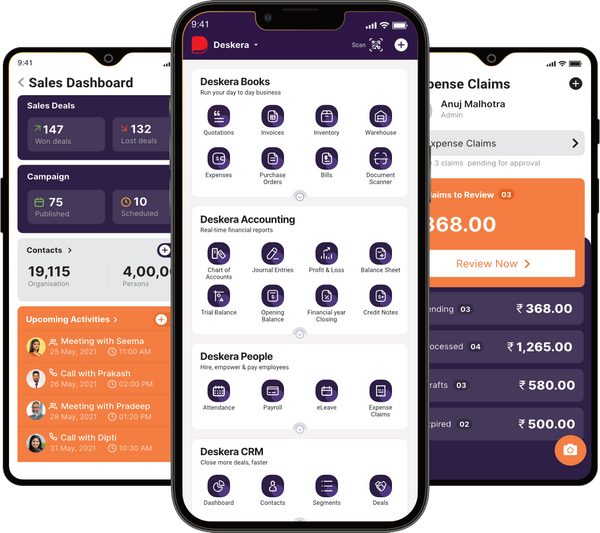Are you looking for a way to ensure accuracy in your accounts payable process? Three-way matching is an effective solution! Three-way matching is used by over 80% of the Fortune 500 companies in the US.
Three-way matching is a process used in accounts payable departments to ensure that the amount, quantity, and description of an invoice are correct. It also helps to prevent duplicate payments and fraudulent activity.
The process involves comparing the purchase order, the goods receipt, and the supplier invoice to ensure they match. If there are discrepancies, the accounts payable department must investigate and resolve the issue before making payment.

In this article, we will discuss the purpose of three-way matching, its advantages, and how it can improve your accounts payable process.
We will also look at some of the challenges associated with three-way matching. So sit back, relax, and get ready to learn all about Three Way Matching!
Here is all that we shall cover in this post:
- What Is Three-Way Matching?
- How Does Three-Way Matching Work?
- Stakeholders Involved in Three-Way Matching
- 7 Benefits of Three-Way Matching
- Disadvantages of Three-Way Matching
- 4 Ways to Make Three-Way Matching More Efficient
- Conclusion
- Key Takeaways
What Is Three-Way Matching?
Three-way matching is a process used to verify that the amounts on three separate documents (e.g., purchase order, invoice, and goods receipt) match before releasing a payment. It ensures that the buyer only pays for what was ordered and received and that the seller is being paid for the goods or services provided.
- It involves comparing an invoice from a vendor with the receiving report and purchase order for the same transaction. The goal is to make sure all data matches up.
- The primary purpose of three-way matching is to prevent fraudulent transactions from slipping through the cracks. It also ensures that all invoices are paid accurately and on time.
- Organizations can ensure that their three-way matching process is efficient and effective by having a designated staff member responsible for the procedure. It can also be done by following best practices,
- Three-way matching is essential for businesses to ensure they only pay for what was ordered and received. It also ensures that the supplier is paid for the goods or services.
- It is essential that businesses thoroughly review all documents to ensure that all information is accurate and matches before releasing payment.
Three-Way Matching Explained
Three-way matching involves comparing three documents: the purchase order, the invoice, and the receipt. The process helps reduce discrepancies and errors and helps to ensure accuracy in the AP process. The details that need to be compared include the following:
- The item name or number.
- The number of goods or services.
- The price.
- The delivery or service date.
If these details do not match, the transaction must be investigated further.
The three-way matching process can be done manually or using an automated system. With manual matching, the documents are manually compared. Any discrepancies are noted and investigated.
With a computerized system, the records are scanned, and the details are automatically compared. Any differences are flagged and can be analyzed more quickly.
Automated systems can reduce the time required to complete the matching process, as the documents are scanned and compared quickly. Automated three-way matching also helps to reduce the risk of human error. The details are compared, and any discrepancies are flagged rapidly.
Difference Between 2-Way, 3-Way, and 4-Way Matching
The concept of "matching" is used in various areas, including accounting. In accounting, matching compares information from two documents to ensure they match or agree. Matching can be used to help ensure accuracy in the recording of data. Matching can be done in various ways, including 2-way, 3-way, and 4-way matching.
2-Way Matching: 2-way matching is the most basic type of matching. In this type of matching, two documents are compared to each other. It is done to ensure that the information on one document matches the information on the other.
This matching type is usually used for simple transactions such as purchasing goods or services. For example, when a customer orders a product from a business, the business can use 2-way matching to ensure that the customer's order is accurate and matches the product's description.
- Two-Way matching is used to manage inventory. This process compares the data in two different systems: the inventory system and the purchase order system. The goal of this process is to ensure accuracy and completeness.
- Two-Way matching is used to reconcile financial statements. To ensure accuracy, this process compares the data in two systems, a bank statement and the accounting system.
3-Way Matching: Three-way matching is the process of matching the invoice, purchase order, and receiving the report. It is the process of ensuring that all three documents are in agreement.
In addition to verifying that the price, quantities, and delivery terms match the invoice and purchase order, three-way matching verifies that the actual quantities and costs of the goods received match the receiving report.
4-Way Matching: 4-way matching is the most complex type of matching. In this type of matching, four documents are compared to each other. It is done to ensure that the information on one document matches the information on the other three documents.
This matching type is usually used for the most complex transactions, such as international purchases. For example, when a business purchases materials from a vendor in another country, the company can use 4-way matching to ensure that the vendor's invoice matches the purchase order, the receiving report, and the customs document.
- Two-way matching is the most basic form and is typically used for small purchases. It can be used for larger purchases but is not ideal as it does not provide the additional assurance of accuracy that three-way and four-way matching does.
- Two-way, three-way, and four-way matching are essential tools for any business. They are necessary tools for any business that wants to ensure accuracy and reduce payment errors. They assure that the company is paying for the goods it has received and that the supplier is getting paid for the goods it has provided.
- In addition to assuring accuracy, using two-way, three-way, and four-way matching also helps reduce payment errors. Each document is compared against the other. It helps to ensure that the company is paying the correct amount. It also prevents payment errors such as overpayment or underpayment.
- A good accounts payable system should include some matching process. 2-way matching may be sufficient for some companies. For those requiring greater accuracy assurance, 3-way or 4-way matching may be better options.
- Other types of matching can be used in the accounts payable process, such as 5-way matching and 6-way matching. These methods are more complex and are typically used in larger companies with more complicated transactions.
As the complexity of the matching process increases, it is essential to ensure that the appropriate system is in place to ensure accuracy. It could include hiring a specialist to manage the matching process or investing in an automated system capable of handling the complexity of two-way, three-way, and four-way matching.
How Does Three-Way Matching Work?
Three-way matching process is vital to any business, as it helps to protect from costly errors and potential fraud.
Step 1: Verifying the Purchase Order
The first step in the three-way matching process is to verify the purchase order. It involves checking the order to make sure the quantity, price, and delivery date are all correct. The purchase order should include the supplier's contact information.
The purchase order number should also include any applicable terms and conditions. Any information that needs to be corrected should be fixed before the order is sent to the supplier.
Step 2: Confirming the Invoice
The next step is to confirm the invoice. It involves verifying that the goods received match the information provided on the invoice.
It includes the item description, quantity, price, delivery date, and additional charges. It is also essential to ensure that the invoice is authorized correctly and that the terms and conditions are accurate.
Step 3: Confirming the Receipt
The final step in the three-way matching process is to confirm the receipt. It involves verifying that the goods were received in the same condition as when they left the supplier. It is also essential to ensure that the receipt includes the item description, quantity, price, and delivery date.
The receipt should also be appropriately authorized and include applicable terms and conditions. Once all three steps of the three-way matching process have been completed, the payment can be released to the supplier.
Three-Way Matching Components
The three-way matching process involves three components: the purchase order, the delivery note, and the invoice. Each component must be accurate and match the other components for the transaction to be successful.
Purchase Order: A purchase order is an official document issued by a buyer to a seller that details the items or services the buyer wishes to purchase. It offers the seller to sell the specified goods or services at the stated price and terms.
It also serves as the buyer's authorization for the seller to proceed with the transaction. Here are some of the essential points to consider when creating a purchase order:
- Identification: The purchase order should include the contact information of both the buyer and the seller, as well as the date of the order.
- Description: The purchase order should include a description of the purchased goods or services. This description should be detailed and include the quantity, unit of measure, and price for each item or service.
- Terms and Conditions: The purchase order should include the payment terms, such as the payment method, payment due date, and any discounts offered. It should also include other terms and conditions such as delivery date and warranties.
- Authorization: The purchase order must be authorized by the buyer, typically with a signature, to be considered a binding agreement.
- Shipping Information: The purchase order should include shipping information, such as the shipping address and special instructions.
This document is the first step in the three-way matching process.
Delivery Note: The delivery note is the document sent to the customer by the supplier. It is used to confirm that the goods or services specified in the purchase order have been delivered.
- It acts as a receipt for the customer and provides proof that the goods have been delivered to the customer.
- The Delivery Note contains details such as the customer's name, the date of the delivery, the items being delivered, the quantity of each item, the price, and the total amount due.
- Delivery Notes are essential for both the supplier and the customer.
- For the supplier, it serves as a record of the goods that have been delivered and helps to ensure that the customer is billed correctly.
- For the customer, it is proof of purchase and helps ensure they receive the correct items.
Invoice: The invoice is the document sent to the customer by the supplier. It is used to bill the customer for the goods or services purchased. The invoice includes the supplier's name and contact information.
The invoice also consists of the quantities of goods or services purchased and the total amount due. The invoice must match the purchase order and delivery note for the three-way match to be successful.
How to Implement Three-Way Matching
Three-way matching is an essential part of the Accounts Payable process. It is vital to have a good understanding of how to implement three-way matching. Maintaining a healthy accounts payable process and ensuring accurate payments is essential.
Understand the Three-Way Matching Process:
The three-way matching process involves comparing the Purchase Order (PO) to the invoice. Then compares the invoice to the Goods Received Note (GRN).
- This process helps ensure that what was ordered is received and invoiced.
- To implement it properly, it is essential to understand the steps involved in the three-way matching process.
Create a Three-Way Matching Policy:
Implementation of three-way matching is to create a policy that outlines the procedure for matching the three documents.
- The policy should include the details of the matching process. Such as the documents that need to be compared, the criteria for matching, and the timelines for completing the matching process.
- The policy should also include the procedures for resolving discrepancies between the documents.
Set Up Appropriate Internal Controls:
The next step in implementing three-way matching is to set up appropriate internal controls.
- These controls should ensure that the three documents are compared accurately and promptly.
- For example, the organization should define roles and responsibilities for the personnel involved in the matching process.
- The personnel should be given access to the necessary documents and information to complete the process.
Establish an Automated System:
Setting up an automation system is a great way to streamline the three-way matching process. An automated system can quickly and accurately compare the three documents.
- This system can also be used to generate reports that can be used to track the matching process.
- Automation can also help to reduce errors and discrepancies, as the data is automatically checked and compared.
- Automation systems can be used to help automate the process of comparing the PO, Invoice, and GRN. This can save time and ensure accuracy.
Train Employees: It is crucial to ensure that all employees involved in the three-way matching process are appropriately trained. Training should include the steps in the process, the policies in place, and how to use the automation system (if applicable). It will help ensure that everyone follows the same process and maintains accuracy.
Monitor and Audit the Process: Once the three-way matching process is implemented, it is essential to monitor and audit it periodically. It can help ensure that the process is followed correctly and that any discrepancies are caught and handled promptly.
Following these steps can ensure that three-way matching is implemented correctly. It can also help to ensure that accuracy is maintained.
Stakeholders in Three-Way Matching
Stakeholders in three-way matching are those individuals or entities interested in the three-way matching process. The three-way matching process is a multi-step process used to reconcile differences between a supplier or vendor invoice, a purchasing or procurement requisition, and a receiving or inventory report.
The stakeholders involved in the three-way matching process are:
Supplier/ Vendor: They are responsible for providing an invoice for the goods and services. The invoice must match the purchasing or procurement requisition and the receiving or inventory report. The supplier must also ensure that all payments are made on time. The goods and services provided must meet the customer's requirements.
Purchasing/ Procurement Department: They are responsible for creating a purchase order. The purchase order must match the supplier invoice and the receiving or inventory report. The purchasing or procurement department must also ensure that the goods and services meet the customer's requirements. The goods and services must be purchased at the best possible price.
Accounting Department: The accounting department is responsible for verifying that the invoice, purchase order, and receiving documents match the quantity, quality, and price of the goods or services provided. They must also ensure that the goods and services meet the customer's requirements and are purchased at the best price.
Receiving/Inventory Department: The receiving or inventory department is another key stakeholder in the three-way matching process. They are responsible for obtaining the goods and services from the supplier. They verify that they match the purchase order and record the details in the inventory system.
The receiving or inventory department must also ensure that all goods and services are received in good condition. The quantities received must match up with the purchase order.
Each of these stakeholders is essential in ensuring the process runs smoothly. All goods and services are paid for correctly and on time.
7 Benefits of Three-Way Matching
Here are some of the benefits of three-way matching for businesses.
1. Improves accuracy: Three-way matching helps improve accuracy and reduce potential errors. This system matches the invoice and purchases order to the goods received. The system ensures that all the invoice and purchase order details are accurate and match what was received. It helps to ensure that the correct goods have been delivered, the right quantity has been received, and the right price has been paid.
The system also ensures that all the necessary paperwork is in place and all the documents are up to date. This helps to reduce any inaccuracies and errors that could otherwise occur.
2. Reduces fraud: Three-way matching helps to reduce fraud and security risks. The system requires the supplier to provide all the necessary documents and proof of payment. It helps to ensure that the correct goods have been delivered and that suitable payment has been made.
It helps to reduce the risk of fraudulent activity and ensure that the supplier is not taking advantage of the customer. It also helps to ensure that all the necessary security protocols are in place and that the goods are delivered safely and securely.
3. Better control over inventory: Three-way matching helps to provide better control over inventory and improve the overall efficiency of the supply chain. The system ensures that the inventory is tracked and monitored.
Any discrepancies can be easily identified and addressed. It helps to ensure that the inventory is accurate and up to date and that any potential issues can be quickly addressed. It also helps reduce the time and effort required to manage the inventory and makes tracking and monitoring the flow of goods easier.
4. Improved visibility: Three-way matching helps to improve visibility and provide greater clarity over the supply chain. The system ensures that all the necessary information is available and accessible. This makes it easier to identify any discrepancies or potential problems.
It helps to ensure that any issues can be quickly addressed and resolved and that the supply chain runs smoothly. The system also helps to improve communication between the supplier and the customer. It helps ensure that potential problems are identified and addressed on time.
5. Cost savings: Three-way matching helps to reduce costs and improve the overall efficiency of the supply chain. The system helps to ensure that the correct goods are delivered, the right quantity is received, and the right price is paid.
It helps reduce unnecessary costs, such as over-ordering or under-ordering, and helps ensure that the correct goods are being delivered at the right price. The system also helps reduce wasted time and effort, which helps reduce the overall cost of the supply chain.
6. Improved customer satisfaction: Three-way matching helps to improve customer satisfaction. It provides a more streamlined and efficient supply chain. The system helps to ensure that the right goods are delivered, the correct quantity is received, and the right price is paid.
It helps ensure that the customer gets the goods they ordered in the quantity requested and at the price they agreed to. It helps to improve the overall customer experience. It ensures that the customer is satisfied with the product and service they receive.
7. Streamlined processes: Three-way matching helps to streamline the supply chain processes and improve overall efficiency. The system ensures that all the necessary documents and paperwork are up to date, which helps to reduce any unnecessary delays or errors.
It also helps to ensure that all the required steps are taken and that the correct goods are delivered, the right quantity is received, and the right price is paid. It helps reduce the time and effort required to manage the supply chain and makes tracking and monitoring the flow of goods easier.
Why Do You Need to Implement the Three-Way Matching Process?
Three Way Matching is an essential process in accounting and finance. It is used to ensure accuracy and consistency in accounting and financial transactions. Here are some reasons why Three Way Matching is important:
1. Prevents Errors: Three Way Matching helps reduce errors in an organization's accounting and financial transactions. The process involves comparing three documents. The purchase order, the invoice, and the receiving report. It helps to ensure that all the information is accurate and in line with the organization's financial goals.
2. Increases Efficiency: By ensuring accuracy and consistency in accounting and financial transactions, Three Way Matching also helps increase the organization's efficiency. This is because it minimizes the time and effort needed to manually check and reconcile all the documents related to a transaction.
3. Enhances Compliance: Three Way Matching also helps to enhance compliance with financial regulations and laws. This is because it ensures that the information in all the documents is accurate and in line with the organization's financial goals.
Three-way matching is an essential process for companies to ensure accuracy in payments. It reduces the risk of fraud and increases efficiency. By automating the process, companies can ensure that it is completed quickly and accurately and have greater visibility into their financial systems and processes.
Disadvantages of Three-Way Matching
Despite the advantages of using three-way matching, there are also some disadvantages that businesses should be aware of.
Cost: Three-way matching can be expensive to implement due to the resources required for the process. It requires an extra layer of accounting staff to check and verify documents for accuracy.
It also requires additional time for the accounts payable staff to process the information. It can be a costly process for businesses that do not have the resources or workforce to dedicate to the task.
Complexity: Three-way matching is a complex process requiring staff to match three documents to each other to ensure accuracy.
It requires a high level of attention to detail, as discrepancies or errors in the documents can be easily overlooked. It can lead to costly mistakes or payment delays and be challenging to manage.
Time Consuming: Three-way matching is time-consuming and can be challenging to manage promptly. It requires accounts payable staff to check and verify documents and reconcile any discrepancies manually.
It can lead to payment delays and be challenging to operate in a timely fashion.
Lack of Standardization: Three-way matching is often done manually, and, as a result, there needs to be a standard procedure to follow. It can lead to inconsistencies and an increased risk of errors.
Human Error: Despite the best efforts of the accounts payable staff, there is always a risk of human error when it comes to three-way matching. It can lead to costly errors, and delays in payment and can be difficult to rectify.
Security: Three-way matching can be vulnerable to security threats. It is due to the amount of information exchanged during the process. It can be a risk for businesses that handle sensitive information, as there is a risk of data being compromised or stolen.
Difficult to Scale: Three-way matching is a very manual process; as such, it can be challenging to scale up the process as the business grows. It can lead to an inefficient process that takes up valuable resources and time.
Businesses must weigh the potential costs and time associated with the process against the potential benefits. It is done to ensure that it is a worthwhile investment.
Why Is Manual Matching Bad for Businesses?
Manual matching is a process where one manually reviews and matches invoices, purchase orders, and other financial documents with the corresponding payment. It is a tedious, time-consuming, and error-prone chore and is increasingly becoming a burden for businesses. Here are some reasons why manual matching is bad for companies:
- Manual matching of invoices is an extremely time-consuming process and can lead to delays in payment. It requires an employee to check each supplier invoice for accuracy manually. Then match it against the purchase order, and goods received. This process can take a considerable time and can be prone to human error.
- Manual matching can also lead to duplicate payments, as when invoices are matched manually, there is a higher chance of overlooking a previously paid invoice. It can lead to businesses paying the same invoice multiple times. It results in unnecessary costs that could have been avoided.
- The risk of errors and losses due to manual matching can negatively impact a business's reputation. If an invoice is not paid on time, it can result in a supplier blacklisting the company and preventing future transactions. It can lead to long-term damage to the business's relationship with its suppliers.
- Manual matching is also prone to fraud and other malicious activities. The manual process makes it difficult to detect if an invoice is not genuine or if it has been modified or tampered with. It can lead to financial losses and increased operational costs.
- Manual matching can also put businesses at risk of non-compliance with accounting regulations and requirements. It can lead to financial penalties and other legal issues.
- Lastly, manual matching can be costly in terms of time and money. The time spent manually matching invoices can be better spent on other business activities. These activities can help the business grow and remain competitive. Additionally, manual matching processes can be expensive due to the labor costs associated with the process.
4 Ways to Make Three-Way Matching More Efficient
1. Utilize Automation: Automation is the key to making three-way matching more efficient. By utilizing automation, businesses can reduce the time and effort required to review invoices, purchase orders, and receipts manually.
Automated systems can also help to spot discrepancies quickly and accurately, saving time and money.
2. Implement Clear Processes: Establishing transparent processes and procedures for three-way matching can help streamline the process. It includes ensuring that all necessary documents are available.
The correct information is included in the documents. Having a set procedure in place for each step in the matching process can eliminate the need for manual review, saving time and reducing errors.
3. Streamline communication: Streamlining communication between departments can make three-way matching more efficient. Having a central location for documents and information can ensure that all parties have access to the same information quickly. It reduces delays and eliminates mistakes.
4. Centralized Data: Having all your data in one centralized location makes it easier to compare the purchase order, invoice, and delivery note.
All of the information should be stored in the same system and easily accessible. This makes it easier to review each document and identify any discrepancies quickly.
5. Use Dedicated Software: Dedicated software can help to make the three-way matching process faster and more efficient.
By utilizing software designed explicitly for three-way matching, businesses can eliminate the need for manual review and reduce errors.
6. Robust Reporting: Access to robust reporting can help you quickly identify discrepancies in the three-way matching process.
Reports can help you review the purchase order, invoice, and delivery note and promptly identify differences. It can save time and help you quickly identify any potential issues.
7. Monitor Performance: Monitoring performance can help businesses identify areas where three-way matching can be improved.
By tracking the time it takes to complete the matching process, companies can identify areas where additional automation or streamlining is needed.
8. Vendor Self-Service Portal: Setting up a vendor self-service portal can help streamline the process.
By giving your vendors access to the portal, they can review the purchase order, invoice, and delivery note. They can make any necessary corrections before the invoice is sent for approval. It can help reduce errors and speed up the process.
9. Educate Employees: Educating employees on the importance of three-way matching can ensure that the process is followed accurately and efficiently.
Establishing clear processes and procedures and providing training on the software and systems used can help employees understand the process. It can help ensure that it is completed correctly.
By implementing these strategies, businesses quickly identify discrepancies and process payments faster.
Future of Three-Way Matching
In the future, three-way matching is expected to become even more critical as businesses move towards automation and digitalization. As more companies transition to online platforms and automated processes, three-way matching will be used to ensure data accuracy between the different systems.
Data Analytics
Data analytics will become an essential tool for three-way matching in the future. Companies can use data analytics to identify patterns in the matching process and make informed decisions.
It will help companies identify areas where the process can be improved. It will also ensure that the matching process is as accurate and efficient as possible.
Artificial Intelligence
AI-powered three-way matching will be able to quickly and accurately match invoices to purchase orders and receipts. It will help reduce the time spent on manually matching documents.
It will also enable businesses to make accurate payments faster. It will also be able to detect discrepancies more quickly. It will prevent payment errors and fraudulent activities.
Automation
Automation will become the norm for three-way matching. Automation will make the process much faster, as businesses will no longer have to enter data into their systems manually. It will also reduce the chances of human errors occurring.
These can have significant financial implications. Businesses will also be able to save time and money using automated systems. They will not need manual labor to complete the three-way matching process.
Cloud Technology
Cloud Technology is expected to become the primary medium for three-way matching. It will allow for better data sharing between businesses. It will make it easier for companies to access and store data in one central location.
Furthermore, cloud technology will provide enhanced security and reliability. This will make it easier for businesses to trust their data and feel more confident in the three-way matching process.
Blockchain Technology
Blockchain technology will be used for three-way matching in the future. This will help to ensure the accuracy and integrity of the matching process.
Blockchain technology will allow companies to track the progress of the matching process. It will ensure that all data is secure and accurate. It will help to reduce errors and improve the overall efficiency of the process.
Predictive Analytics
Predictive analytics can be used to predict future outcomes based on the data from the matching process. It can help to identify potential issues and discrepancies and can help to prevent them from occurring.
Overall, the future of three-way matching looks very promising. It will help to ensure accuracy and integrity in the three-way matching process, which will benefit businesses in the long run.
How can Deskera Help You?
As a manufacturer, you must keep track of your inventory stock. The condition of your inventory has a direct impact on production planning, people and machinery use, and capacity utilization.
Deskera MRP is the one tool that lets you do all of the above. With Deskera, you can:
- Control production schedules
- Compile a Bill of Materials
- Produce thorough reports
- Make your own dashboard.
Deskera ERP is a complete solution that allows you to manage suppliers, track supply chain activity in real time, and streamline a range of other company functions.

Deskera Books allows you to manage your accounts and finances better. It helps maintain good accounting standards by automating billing, invoicing, and payment processing tasks.
Deskera CRM is a powerful tool that organizes your sales and helps you close deals rapidly. It enables you to perform crucial tasks like lead generation via email and gives you a comprehensive view of your sales funnel.
Deskera People is a straightforward application for centralizing your human resource management activities. Not only does the technology expedite payroll processing, but it also helps you to handle all other operations such as overtime, benefits, bonuses, training programs, and much more.
Conclusion
Three-way matching is an effective and efficient way for businesses to ensure accuracy regarding invoice and purchase order processing. It is a process that requires comparing data from three different sources; a purchase order, an invoice, and a receiving report.
By comparing the information from all three sources, businesses can identify and correct discrepancies, duplicate payments, and other issues that can lead to costly errors. The benefits of three-way matching are numerous.
By completing the matching process, businesses can be sure that they are only paying for goods and services received. They can also be sure that they are paying enough for their suppliers.
Overall, three-way matching is essential for any business that wants to ensure accuracy and efficiency regarding invoice and purchase order processing. By taking advantage of the benefits of three-way matching, companies can improve their overall financial health and ensure that their finances are in order.
By using a three-way matching system, businesses can be sure that they are protecting their financial interests and ensuring that their vendors are being paid appropriately and on time.
Key Takeaways
- Three-way matching is an accounting process used to ensure the accuracy and completeness of financial transactions.
- It involves comparing the purchase order, the supplier invoice, and the receiving report to ensure that all three documents agree.
- A company must have an effective three-way matching system to ensure accurate and timely payments to suppliers.
- It is crucial to clearly understand the three documents involved in the matching process: the purchase order, the supplier invoice, and the receiving report.
- All three documents must be accurately and completely filled out before the three-way matching process can occur.
- Three-way matching can help identify discrepancies in suppliers' payments and reduce the risk of fraud.
- Automating the three-way matching process can help to reduce errors and speed up the reconciliation process.
- It is essential to have an audit trail in place to track any changes to the documents involved in the three-way matching process.
- Regular reviews of the three-way matching process should be conducted. It is to ensure the accuracy and completeness of financial transactions.
Related Articles













